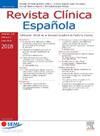西班牙内科服务中的糖尿病足感染(2018-2022 年)
IF 2.3
4区 医学
Q2 MEDICINE, GENERAL & INTERNAL
引用次数: 0
摘要
糖尿病足部感染是糖尿病常见且严重的并发症,具有广泛的临床表现。尽管它们具有重要意义,但它们的管理和对内科服务的影响仍然存在不确定性。材料和方法利用专业医疗活动登记处(RAE-CMBD) 5年(2018- 2022年)的数据进行了一项回顾性队列研究。本研究纳入了诊断为糖尿病足的内科出院患者。收集了人口统计学、临床和活动数据,并分析了糖尿病足的累积发病率、住院死亡率、截肢需求和相关的住院费用。结果15402例诊断为糖尿病足,占内科的0.41%,这意味着这些服务中每1000名入院患者中年龄调整后的发病率在2至3例之间。这些患者的住院死亡率很高(16%),需要截肢的比例很高(8.25%)。高龄、合并症的存在和入院时的并发症与较高的死亡率和截肢风险相关。每次入场的平均费用超过6000欧元。结论糖尿病足是一种对内科服务有很大影响的病理,既因为活动量大,也因为这种疾病产生的高死亡率和高费用。本文章由计算机程序翻译,如有差异,请以英文原文为准。
Infecciones de pie de diabético en los servicios de Medicina Interna de España (2018-2022)
Introduction
Diabetic foot infections represent a common and serious complication of diabetes mellitus, with a wide range of clinical presentations. Despite their significance, uncertainties persist regarding their management and impact on Internal Medicine services.
Materials and methods
A retrospective cohort study was conducted using data from the Registry of Specialized Healthcare Activity (RAE-CMBD) over a five-year period (2018-22). Patients discharged from Internal Medicine with a diagnosis of diabetic foot were included. Demographic, clinical, and activity data were collected, and the cumulative incidence of diabetic foot, in-hospital mortality, need for amputation, and associated costs of hospitalization were analyzed.
Results
15402 episodes with a diagnosis of diabetic foot were identified, representing 0.41% of Internal Medicine, which implies an age-adjusted incidence rate of between 2 and 3 cases per 1000 admissions in these services. These patients had a high in-hospital mortality rate (16%) and a significant percentage required amputation (8.25%). Advanced age, the presence of comorbidities, and complications during admission were associated with a higher risk of mortality and amputation. The average cost per admission is over €6000.
Conclusions
Diabetic foot is a pathology with a high impact on Internal Medicine services, both due to the volume of activity and the high mortality and cost generated by this condition.
求助全文
通过发布文献求助,成功后即可免费获取论文全文。
去求助
来源期刊

Revista clinica espanola
医学-医学:内科
CiteScore
4.40
自引率
6.90%
发文量
73
审稿时长
28 days
期刊介绍:
Revista Clínica Española published its first issue in 1940 and is the body of expression of the Spanish Society of Internal Medicine (SEMI).
The journal fully endorses the goals of updating knowledge and facilitating the acquisition of key developments in internal medicine applied to clinical practice. Revista Clínica Española is subject to a thorough double blind review of the received articles written in Spanish or English. Nine issues are published each year, including mostly originals, reviews and consensus documents.
 求助内容:
求助内容: 应助结果提醒方式:
应助结果提醒方式:


